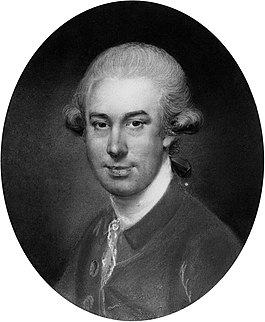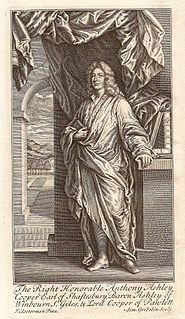Related Research Articles

Charles Montagu, 1st Earl of Halifax was an English statesman and poet. He was the grandson of the 1st Earl of Manchester and was eventually ennobled himself, first as Baron Halifax in 1700 and later as Earl of Halifax in 1714. As one of the three members of the so-called Whig Junto, Montagu played a major role in English politics under the reigns of King William III and Queen Anne. He served as Chancellor of the Exchequer from 1694 to 1699 and as First Lord of the Treasury from 1714 until his death the following year. He was also President of the Royal Society and a patron of the scientist Isaac Newton.

John Evelyn was an English writer, gardener and diarist.

Anthony Wood, who styled himself Anthony à Wood in his later writings, was an English antiquary. He was responsible for a celebrated Hist. and Antiq. of the Universitie of Oxon.

Sir Edward Nicholas was an English office holder and politician who served as Secretary of State to Charles I and Charles II. He also sat in the House of Commons at various times between 1621 and 1629. He served as secretary to Edward la Zouche and the Duke of Buckingham in the Admiraltyand became a clerk of the Privy Council. He supported the Royalist cause in the English Civil War and accompanied the court into exile, before assuming the post of Secretary of State on the Restoration.

Rev. Francis Blomefield, FSA, Rector of Fersfield in Norfolk, was an English antiquarian who wrote a county history of Norfolk: An Essay Towards a Topographical History of the County of Norfolk. It includes detailed accounts of the City of Norwich, the Borough of Thetford and all parishes in the southernmost Hundreds of Norfolk, but he died before completing it. This was done by a friend, Rev. Charles Parkin. The Norfolk historian Walter Rye related that although no portrait of him was known to exist, Blomefield closely resembled the astronomer John Flamsteed, whose portrait was used to depict Blomefield on the frontispiece of one of his volumes. His history of Norfolk was reissued in London in 11 volumes by William Miller in 1805–1810, the last seven being by Parkin.

John Russell RA was an English painter renowned for his portrait work in oils and pastels, and as a writer and teacher of painting techniques.

Paul de Rapin, sieur of Thoyras, was a Huguenot historian writing under English patronage. His History of England, written and first published in French in 1724–27, was an influential exposition of the Whig view of history on both sides of the English Channel.

Ozias Humphry was a leading English painter of portrait miniatures, later oils and pastels, of the 18th century. He was elected to the Royal Academy in 1791, and in 1792 he was appointed Portrait Painter in Crayons to the King.

Sir Francis Grant was a Scottish portrait painter who painted Queen Victoria and many distinguished British aristocratic and political figures. He served as President of the Royal Academy.

John Shackleton was a British painter and draughtsman who produced history paintings and portraits. His parents and origins are unknown.
John Featley, also known as John Fairclough, was a chorister and divine. He was a chaplain to Charles I. His uncle was the theologian Daniel Featley.
John Ayres, an English author, scribe and publisher.

Samuel Laurence was a British portrait painter.

Simon Gribelin (1661–1733) was a French line engraver.
Thomas Reeve, D.D., was an English royalist and Anglican divine.

Edward Chamberlayne was an English writer, known as the author of The Present State of England.

Richard Gaywood was an English engraver.

Joshua Kirby, often mistakenly called John Joshua Kirby, was an English 18th-century landscape painter, engraver, writer, draughtsman and architect famed for his publications and teaching on linear perspective based on Brook Taylor's mathematics.
Allan Fea, was a British historian, specializing in the English Civil Wars period and the House of Stuart, and an antiquary, after a first career as a clerk at the Bank of England.
Richard Watson was a Church of England clergyman, Royalist divine, controversialist, and poet.
References
![]() This article incorporates text from a publication now in the public domain : "Bridges, Noah". Dictionary of National Biography . London: Smith, Elder & Co. 1885–1900.
This article incorporates text from a publication now in the public domain : "Bridges, Noah". Dictionary of National Biography . London: Smith, Elder & Co. 1885–1900.